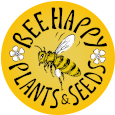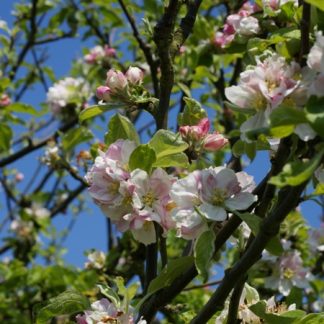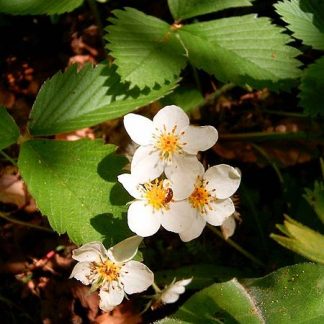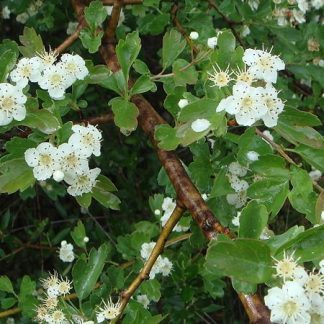Description
Rosaceae (family name)
Forage for Pollinators: Produces Pollen and Nectar, which is very good in some years possibly depending on adequate rainfall or trees roots’ access to water. This is very highly favoured by Honeybees, though also sought by other short and long-tongued Bumblebees. In the years when Hawthorn nectar flow is good Honeybees will make a high quality honey which is dark amber and very thick (some think almond-flavoured), and sometimes mistaken for heather honey. Solitary bees such as Andrena, Halictus and Lassioglossum are also frequent visitors. Although not pollinated by bees (as with Rubus species, it does provide good quality forage for all bees). Noted for attracting many insect species.
Flowering time: May, June.
Growing information: NATIVE TREE growing to 6m (20ft) by 4m (13ft) in ten years. Hardy to minus 28ºC. Often found in hedgerow, but flowers best in a sunny position. Tolerant of all soils (though not waterlogged or acid peat). Ideal as a garden or orchard tree, though often grown as farmland hedge plant it is too often trimmed back hard, so best left untrimmed for flowers and fruit. Hawthorn berries are rated by herbalists as a ‘food for the heart par excellence’; which has been borne out by modern research, being useful for all conditions of the circulatory system (prolonged use being both safe and recommended). We should all have this tree in our gardens and pick the fruit to eat raw or cooked, make pies, jams or delicious fruit-cake. The leaves can also be dried to make a tea substitute!
Our trees have been propagated from wild seed found on strong, healthy trees locally.





